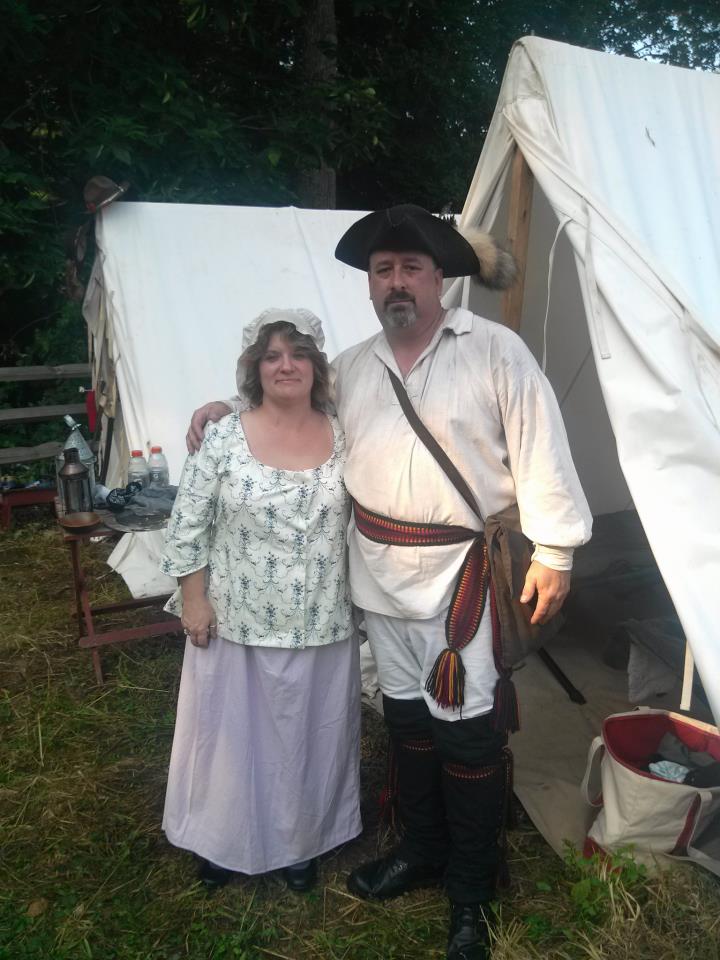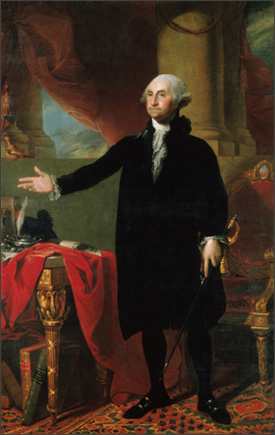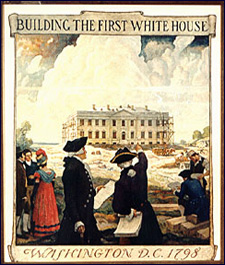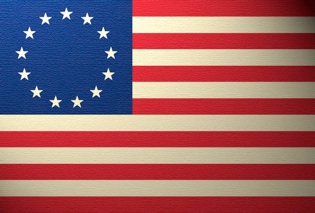The Patriot Movie I Reviewed by WTK Tyler
The movie the Patriot takes place around when the Revolutionary War. It is a story about Colonel Benjamin Martin. He has seven children and no wife. The movie the Patriot takes place around when the Revolutionary War. It is a story about Colonel Benjamin Martin. He has seven children and no wife. AT the beginning of the movie it shows some of his boys out in the fields plowing and picking crop. Shortly after they finish and go inside to see their dad Benjamin Martin. Benjamin Martin got his rank of Colonel while fighting in the Indian War along with the British. They were a farming family. Tyler  Â
            GREAT JOB PATRIOT, TYLER!  
Tyler 14 with Col. Allen West
That picture is a few years old and was taken at an event we were at. I often take Tyler with me to political event as he enjoys it and loves Allen West.
 Mrs. Darress with Col. Allen West at the luncheon on Nov 8th 2013. When he walked in the room he started singing “From the Halls of Montezuma”. He gave a great speech and answered a bunch of questions. He will be on Greta on Monday night with an important announcement.
Mrs. Darress with Col. Allen West at the luncheon on Nov 8th 2013. When he walked in the room he started singing “From the Halls of Montezuma”. He gave a great speech and answered a bunch of questions. He will be on Greta on Monday night with an important announcement.
A note from Mrs. Shona Darress- Tyler’s Grandmother.
I came to America in 1977 after living in Libya for 7 years. I was born in New Zealand and married a fellow New Zealander who was the father of my three girls including Tyler’s mother. My girls were very young when we came to America. After several years here in Florida I divorced my first husband and four years later I married my present husband, who is American and adopted his two young children making me mother of five! Tyler is now attending a charter school here in Stuart called Clark Advanced Learning Center. He is in the 10th grade and is taking high school and college classes. His school is adjacent to out local college. He is doing very well and should graduate with his high school diploma and possibly an AA degree. Tyler will be 16 next month. He has Aspergers, but is doing so well in school. He and his sister live with me and my husband and I have custody of them both.Â
During the American Revolution in 1776, Benjamin Martin (Mel Gibson), a veteran of the French and Indian War and widower with seven children, is called to Charleston to vote in the South Carolina General Assembly on a levy supporting the Continental Army. Fearing war against Great Britain, Benjamin abstains. Captain James Wilkins (Adam Baldwin) votes against and joins the Loyalists. A supporting vote is nonetheless passed and against his father’s wishes, Benjamin’s eldest son Gabriel (Heath Ledger) joins the Continental Army.
Continued at http://en.wikipedia.org/wiki/The_Patriot_%282000_film%29
 WELCOME – WTK HISTORY MYSTERY GUEST!
WELCOME – WTK HISTORY MYSTERY GUEST!
 Dear Tyler.
Dear Tyler.
My name is Antoine Chamberland but you can call me Tony, I am a private in the 6th Connecticut Regiment .Our Militia Company was formed in the 18th century to defend the towne of Lebanon, Connecticut, against its enemies. A typical Sunday started with church services, after which we would train as a militia, honing our skills to serve our community in times of danger.
In 1775, the Lebanon Towne Militia answered the call and saw service at Breed’s Hill and the Battle of Boston, at the beginning of the American Revolution. The Lebanon Towne Militia was disbanded in 1776, with some members becoming part of the 6th Company of the Continental Line, and others supporting the war from their farms…
Your review of The Patriot was wonderfully done and was in fact one of my favorite movies. Keep in mind that what was depicted in the movie was indeed fictional and was the subject of much debate. Hollywood has a tendency to embellish the facts to make them more exciting. Now had this really taken place during the time our Militia group was in operation we would have never met or fought along side Mr Benjamin Martin, you see, He was involved in the Southern theater of operations taking place in South Carolina. Our militia group fought in New England. The battle for bunker hill, Breeds Hill Ect ect. We fought in every major battle that took place in New England.
Please keep up the good work and remember that knowledge is power so stay in school, mind your parents because they were once kids like you. Don’t let bullies be bullies and never do drugs.
Respect and best wishes
Private Chamberland 6th CT Regt.
Ye Olde Lebanon Towne Militia
From Lebanon Connecticut take part in Redcoats and Rebels at Old Sturbridge Village in Sturbridge Massachusetts. Redcoats and Rebels is one of the largest battle reenactments in New England, it takes place every August once a year and has seen in the past over a thousand soldiers in attendance.
Redcoats and Rebels is a two day event that gives people an almost complete look of what colonial life was like in 1775 please join us next year visit www.oldsturbridgevillage.com for information on next years Redcoats and Rebels.
Hope to see you there,
WTK History lesson
GEORGE WASHINGTON | 1789-1797
 On April 30, 1789, George Washington, standing on the balcony of Federal Hall on Wall Street in New York, took his oath of office as the first president of the United States. “As the first of every thing, in our situation will serve to establish a Precedent,” he wrote James Madison, “it is devoutly wished on my part, that these precedents may be fixed on true principles.”
On April 30, 1789, George Washington, standing on the balcony of Federal Hall on Wall Street in New York, took his oath of office as the first president of the United States. “As the first of every thing, in our situation will serve to establish a Precedent,” he wrote James Madison, “it is devoutly wished on my part, that these precedents may be fixed on true principles.”
Born in 1732 into a Virginia planter family, Washington learned the morals, manners, and body of knowledge requisite for an 18th-century Virginia gentleman. He pursued two intertwined interests: military arts and western expansion. At 16 he helped survey Shenandoah lands for Thomas, Lord Fairfax. Commissioned a lieutenant colonel in 1754, he fought the first skirmishes of what grew into the French and Indian War. The next year, as an aide to Gen. Edward Braddock, he escaped injury although four bullets ripped his coat and two horses were shot from under him.
From 1759 to the outbreak of the American Revolution, Washington managed his lands around Mount Vernon and served in the Virginia House of Burgesses. Married to a widow, Martha Dandridge Custis, he devoted himself to a busy and happy life. But like his fellow planters, Washington felt himself exploited by British merchants and hampered by British regulations. As the quarrel with the mother country grew acute, he moderately but firmly voiced his resistance to the restrictions.
When the Second Continental Congress assembled in Philadelphia in May 1775, Washington, one of the Virginia delegates, was elected commander in chief of the Continental Army. On July 3, 1775, at Cambridge, Massachusetts, he took command of his ill-trained troops and embarked upon a war that was to last six grueling years.
He realized early that the best strategy was to harass the British. He reported to Congress, “we should on all Occasions avoid a general Action, or put anything to the Risque, unless compelled by a necessity, into which we ought never to be drawn.” Ensuing battles saw him fall back slowly, then strike unexpectedly. Finally in 1781—with the aid of French allies—he forced the surrender of Cornwallis at Yorktown.
Washington longed to retire to his fields at Mount Vernon. But he soon realized that the nation under its Articles of Confederation was not functioning well, so he aligned himself with the movement leading to the Constitutional Convention at Philadelphia in 1787. When the new Constitution was ratified, the Electoral College unanimously elected Washington president.
He did not infringe upon the policy-making powers that he felt the Constitution gave Congress. But foreign policy became preponderantly a presidential concern. When the French Revolution led to a major war between France and England, Washington refused to accept entirely the recommendations of either his Secretary of State Thomas Jefferson, who was pro-French, or his Secretary of the Treasury Alexander Hamilton, who was pro-British. Rather, he insisted upon a neutral course until the United States could grow stronger.
To Washington’s disappointment, two parties were developing by the end of his first term. Wearied of politics, he retired to his “vine and fig tree” at the end of his second. In his Farewell Address, he urged his countrymen to forswear excessive party spirit and geographical distinctions. In foreign affairs, he warned against long-term alliances.
Washington enjoyed less than three years of retirement at Mount Vernon, for he died of a throat infection December 14, 1799. For months the American people mourned the leader who had helped them win their independence, then ensured that their fledging new government would survive.
 George Washington inspecting the building of
George Washington inspecting the building of
the White House. N.C. Wyeth for Pennsylvania
Railroad, courtesy Smithsonian
Institution Background
After declaring independence from Britain in 1776, the Congress of the United States had wandered around the Mid-Atlantic States, looking for a home. At various times, Philadelphia, Princeton, Trenton, Annapolis, and other cities had served as the nation’s capital. European observers, accustomed to having capitals hundreds of years old, ridiculed the new nation for lacking a permanent seat of government. More importantly, many Europeans—and some Americans—were skeptical that a republican form of government would endure. History had seen many republics come and go; only the Roman Republic had endured for long, and it collapsed into dictatorship.
In 1789, after the ratification of the U.S. Constitution created a stronger national government, President George Washington and a newly chosen Congress assumed office in the temporary capital of New York City. After deciding to build a permanent capital, Congress authorized President Washington to choose a site for the city and pick a design and site for the President’s House. The building would be the first undertaken as the federal government prepared to move to its new home.
In 1792, at Washington’s request, Secretary of State Thomas Jefferson announced an architectural competition to produce design drawings for the President’s House. Washington insisted that the building should be made of stone, so that it would have a more substantial appearance, much like the most important buildings in Europe. The President’s House would be the largest residence in the country until after the Civil War. The young nation had never seen anything like it, and that was what Washington liked about it. The building was to be more than the home and office of the president; it was to be a symbol of the presidency. A republic could not have a king’s palace, but the building must command respect from citizens in the United States and, just as importantly, foreign visitors who came to visit America’s leader.
President Washington also hoped that the public buildings in the new capital “in size, form, and elegance shou’d look beyond the present day.” The nation could not afford anything too extravagant at this time, but the design should allow for flexibility in the future, when the nation progressed. “For the Presidents House,” wrote the nation’s leader, “I would design a building which should also look forward, but execute no more of it at present than might suit the circumstances of this Country when it shall be first wanted. A plan comprehending more may be executed at a future period when the wealth, population, and importance of it shall stand upon much higher ground than they do at present.”
On July 16, 1792, President Washington examined at least six designs submitted in the President’s House architectural competition. The plans were quite varied. Have your students examine three of these designs. They are presented as elevations, showing the front of the building, as if you were standing outside looking at it from across the street or lawn. One of the designs is by James Hoban, an Irishman whom the president had met a year earlier in Charleston. A second plan was submitted by a mysterious man known only as “A.Z.” Historians have speculated that Thomas Jefferson was the mystery designer, but records suggest that the architect likely was John Collins, a builder from Richmond, Virginia. The third design is by James Diamond, a Maryland inventor.
 "Flag Folding Ceremony" The Meaning of each fold
"Flag Folding Ceremony" The Meaning of each fold Navajo Pastors At 9 11 Memorial NYC 2014
Navajo Pastors At 9 11 Memorial NYC 2014No Comments
Leave A Comment Cancel reply
Recent Posts
WTK Reporter Libby interviewed Professor Jonathan W White, PhD
Jonathan W. White is professor of American Studies at Christopher Newport University. He is author or editor of 19 books and more than 100 articles, essays and reviews about Abraham Lincoln, the Civil War, slavery […]
“We cannot walk alone” Rev. M.L. King, Jr., Baptist Pastor – American Minute with Bill Federer
American Minute with Bill Federer
Episode 05: WTK Liberty Players and ‘The Britfield & The Lost Crown’ Radio Show | C. R. Stewart
Experience the captivating ‘Britfield and the Lost Crown’ radio show, presented by We The Kids Liberty Players. Explore themes of family, courage, and history in an engaging storytelling adventure featuring guest appearances by historical figures […]
Episode 04: WTK Liberty Players and ‘The Britfield & The Lost Crown’ Radio Show | Charlotte Bronte
Experience the captivating ‘Britfield and the Lost Crown’ radio show, presented by We The Kids Liberty Players. Explore themes of family, courage, and history in an engaging storytelling adventure featuring guest appearances by historical figures […]
WeTheKids S2E3-Signers of the Declaration of Independence & Interview with Abigail Adams
We are excited to highlight a truly captivating episode from WFYL 1180 AM’s airwaves. The radio show “Signers of the Declaration of Independence of USA & Interview with Abigail Adams” offers listeners a unique blend […]
Jimmy Carter’s Legacy: A Testament to Faith and Leadership
In Remembrance of President JIMMY CARTER: As Americans, we stand together in remembering the extraordinary life and legacy of our 39th President Jimmy Carter. He is known as a man of profound faith, […]




























Nice review. Very complete. I ‘d love to see you do a review on Walt Disney’s “Johnny Tremaine.”
Dear Tyler.
My name is Antoine Chamberland but you can call me Tony, I am a private in the 6th Connecticut Regiment .Our Militia Company was formed in the 18th century to defend the towne of Lebanon, Connecticut, against its enemies. A typical Sunday started with church services, after which we would train as a militia, honing our skills to serve our community in times of danger.
In 1775, the Lebanon Towne Militia answered the call and saw service at Breed’s Hill and the Battle of Boston, at the beginning of the American Revolution. The Lebanon Towne Militia was disbanded in 1776, with some members becoming part of the 6th Company of the Continental Line, and others supporting the war from their farms…
Your review of The Patriot was wonderfully done and was in fact one of my favorite movies. Keep in mind that what was depicted in the movie was indeed fictional and was the subject of much debate. Hollywood has a tendency to embellish the facts to make them more exciting. Now had this really taken place during the time our Militia group was in operation we would have never met or fought along side Mr Benjamin Martin, you see, He was involved in the Southern theater of operations taking place in South Carolina. Our militia group fought in New England. The battle for bunker hill, Breeds Hill Ect ect. We fought in every major battle that took place in New England.
Please keep up the good work and remember that knowledge is power so stay in school, mind your parents because they were once kids like you. Don’t let bullies be bullies and never do drugs.
Respect and best wishes
Private Chamberland 6th CT Regt.